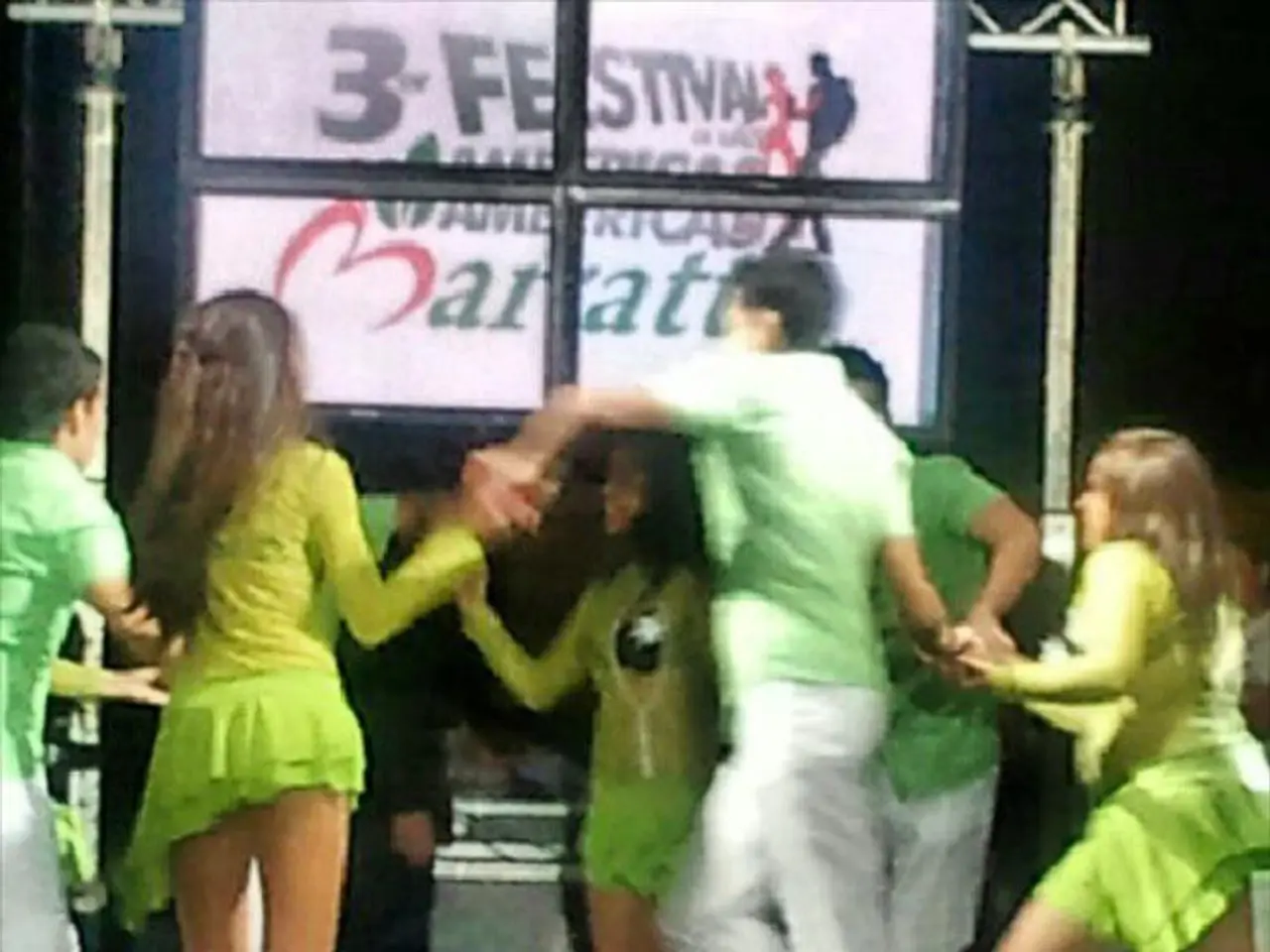Experiencing the Wagnerians: A Two-Day Immersion into Deutsche Oper's The Ring Cycle
In the heart of Berlin, the Deutsche Oper plays host to Stefan Herheim's latest staging of the fourth part of Richard Wagner's epic cycle, 'The Ring of the Nibelung'. The production, titled 'The Twilight of the Gods', has been a topic of discussion among opera enthusiasts, with its unique approach to addressing Wagner's antisemitic views causing a stir.
The opulent foyer of the Deutsche Oper provides a stark contrast to the arrival of refugees visual motif that marked the beginning of this production. At 4 pm, Siegfried comes to life, and audience members are advised to plan their meal carefully to ensure they have adequate ballast to enjoy the bombast that follows.
Wagner's antisemitic views, rooted in 19th-century German nationalism and social upheaval, are well documented. His essays, such as "Das Judenthum in der Musik" (Jewishness in Music), disparaged Jewish musicians and composers, aligning with broader nationalist and racial prejudices of the time. However, it's important to note that Wagner's political views did not directly translate into his musical works.
Despite this, Wagner's writings and cultural status were later appropriated by the Nazi regime to support their Aryan ideology. The regime promoted Wagner's works as embodying "Germanic" cultural ideals and used them to foster nationalist and racist propaganda. This has led to ongoing debate and critical reassessment of Wagner's legacy, with modern scholarship and cultural institutions grappling with how to separate or reconcile his artistic genius from his prejudiced political ideology.
In Herheim's staging, the set resembles the Deutsche Oper's foyer, and audience members are depicted on stage. The production depicts Jewish-coded characters Alberich, Hagen, and another as evil clowns and a gnome, which some find problematic. This approach, while intended to challenge Wagner's framing of Jews as a "corrosive foreign element", has sparked controversy among critics.
During intermissions, discussions about the production, other productions of 'The Ring of the Nibelung' attended, and dining options around the theater are common. A man with "I ♥ Drama" tattooed on his wrist was found eating börek at Crispy Döner during an intermission of the production. The Ring Menu, priced at €67, is available for preorder, or audience members can opt for a visit to Crispy Döner, located just outside the opera house.
Some audience members wear headbands with wings, resembling the protagonists' helms, reflecting their fandom of Wagner. As they reflect on their fandom and discuss reconciling it with Wagner's rabid antisemitism, hundreds of Wagnerians gathered at the Deutsche Oper in May and June 20XX.
The opera, a weeklong commitment spread across four nights, has inspired enthusiasm since Wagner was the Dresden Kapellmeister. The term "Wagnerian", originally used derogatorily, now stands as a testament to the enduring impact of his work. Despite the controversies surrounding the man and his work, Herheim's rendition of 'The Ring of the Nibelung' is never boring, offering a unique and thought-provoking perspective on this timeless masterpiece.
[1] Berry, M. (2012). Richard Wagner and the Anti-Semitic Imagination. Oxford University Press. [2] Gillies, J. (2015). Wagner and the Nazis: The Redemption of a Rebel. Oxford University Press. [3] Schmitz, J. (2011). The Wagner Clan: A History of a Family and Its Music. University of California Press. [4] Marr, W. (1879). The Victory of Judaism over Germanism. London: T. Fisher Unwin.
[1] The opera's intermissions serve as a platform for discussing the production and debating the complexities surrounding Wagner's antisemitic views, a topic heavily explored in works like Berry's "Richard Wagner and the Anti-Semitic Imagination."
[2] Some find Herheim's approach problematic, such as the portrayal of Jewish-coded characters as evil clowns and a gnome, which mirrors the debated use of music by the Nazi regime to promote racist ideologies, a subject discussed in Gillies' "Wagner and the Nazis: The Redemption of a Rebel."








